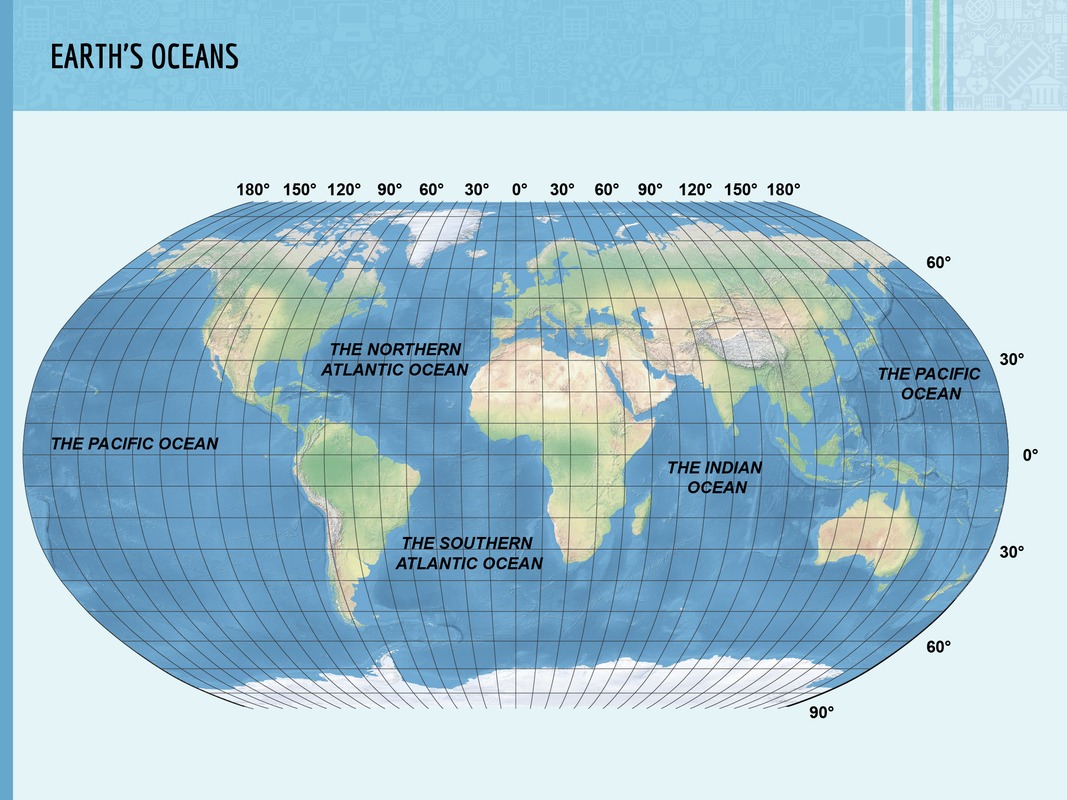5.1 Earth is a blue planet
When looking at the Earth from space, the planet seems to be mainly blue. This is due to the fact that approximately 70 % of the Earth's surface area is covered by water. The oceans are the largest bodies of water on the planet. These are the Pacific Ocean, the Atlantic Ocean, the Indian Ocean, and the Arctic and Antarctic Oceans. The large oceans are surrounded by smaller marginal seas and gulfs.
The Pacific Ocean, often simply referred to as the Pacific, encompasses over one third of our planet's total surface area. It has over 25 000 islands, which is more than in all the other oceans combined. The largest archipelago in the Pacific Ocean is Oceania. The Pacific also contains the deepest submarine spot on the planet, the Mariana Trench, which is 10 911 meters deep.The Atlantic and Indian Oceans are almost equal in size. The Atlantic Ocean receives its name from the giant Atlas of Greek mythology, who was said to carry Earth on his shoulders.
The Arctic and Antarctic Oceans can be thought of as extensions of the Atlantic Ocean. The Arctic Ocean is connected to the Pacific Ocean via the Bering Strait.
